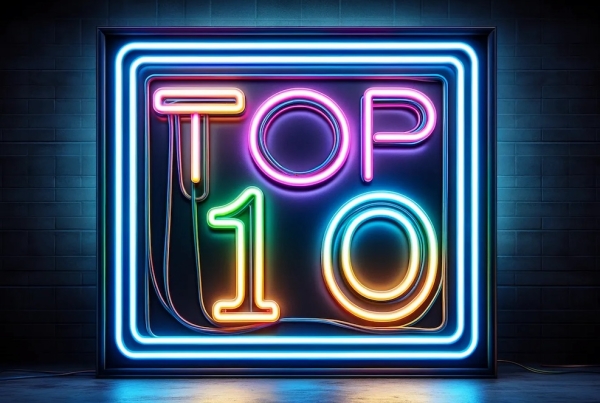Chances are, you’re interrupting your workflow right now to read this article. Now, how many times have you shifted your focus from work to your mobile screen to scroll endlessly through reels on social media? Video marketing has become one of the most powerful tools to capture an audience’s attention, accounting for 91% of internet traffic already in 2025.
But did you know there’s a specific format that’s hooking your audience like never before? Short-form video content has become the cornerstone of successful digital marketing strategies in the past few years. From the groundbreaking introduction to Vine in 2013 to the rise of TikTok, Instagram Reels, and YouTube shorts, short-form video has become the preferred tool for businesses to share industry knowledge, promote content, and hop on the latest trends. In fact, social media algorithms favour short-form content, from an optimal running time of 30 seconds on Instagram and TikTok to 90 seconds on LinkedIn. This format may be brief, but it comes with high value for the viewer and lasting results for your business.
▶️ Press play to go beyond the blog:
Tune in as our BlogCast hosts explore the psychology behind short-form video: why it works, what hooks viewers, and the must-know best practices for making your content stick.
There’s a reason short-form content has become a leading strategy in the marketing world, and the answer is found in neuroscience. Through psychological principles, businesses can understand how viewers are triggered by short-form video and why they should leverage this format to enhance engagement and build their brand.
In this blog, we’re going to teach you everything you need to know about the psychology behind short-form video and outline best practices you can follow to craft an effective short-form content strategy.
What is Short-Form Video?
Short-form videos are brief video content that typically range from 15 seconds to 3 minutes in length…although, industry best practices will tell you not to exceed 60 seconds in duration (but we’ll get into these details later). While short-form video use varies across platforms, their essence is to provide concise, visually engaging content for quick consumption.
Short-Form Definitions Across Platforms
Different platforms have different rules for short-form video content, including:
- TikTok: Originally, videos were limited to 15-60 seconds but can now reach up to 3 minutes
- Instagram Reels: Previously limited to 90 seconds, videos can now be up to 3 minutes
- YouTube Shorts: Content is capped at 3 minutes
- LinkedIn: While allowing videos up to 10 minutes long, engagement typically drops after 30 seconds
Length is just one defining characteristic of short-form video content. Typically, these videos are designed for mobile-first viewing in vertical format, and depend heavily on storytelling techniques that deliver information quickly and memorably.
How B2B Marketers Are Using Short-Form Content
You might be familiar with your favourite B2C brands utilizing short-form videos for advertising, but B2B companies have also found remarkable value in this strategy for specific contexts, including:
- Product demonstrations: Providing quick overviews of product features and benefits
- Thought leadership: Sharing expert insights in short, digestible formats
- Educational snippets: Breaking down complex concepts into understandable segments
- Company culture: Humanizing brands with behind-the-scenes snapshots
The advantage of short-form content is not only about length, it allows B2B companies to cut through the noise and deliver meaningful and strategic content to the right users.
Psychology Behind Short-Form Video
There’s a reason short-form video popularity continues to grow, and it’s rooted in how our brains process information and make decisions. Understanding these psychological mechanisms can help B2B marketers create content that makes an impact.
Chasing New Experiences
Dopamine is a type of chemical found in your brain and is responsible for feelings of pleasure, achievement, and motivation. It’s why you enjoy eating ice cream or pizza, and the reason you feel good after receiving a promotion at work. In the world of short-form video, dopamine is released because of three distinct factors:
- Novelty: Each new video provides a fresh stimulus to feed your attention
- Unpredictability: Not knowing which video will be the most engaging heightens anticipation and keeps users scrolling
- Immediate gratification: Every person desires instant reward and information, making short-form content an ideal outlet to satisfy this need
There’s truth to the term “doom-scrolling” and it relates to the human need for new experiences and changing stimuli. For B2B marketers, it’s crucial to understand how this dopamine reaction affects social media users in order to craft a short-form content strategy that keeps your audience engaged.
Attention Spans Are Shrinking
As Dr. Gloria Mark states, “Our attention spans are declining, averaging just 47 seconds on any screen“. Although we’re not doomed, technology has dramatically shifted how we think, work, and focus, and this growing inattention from users is where short-form video thrives. Here’s why:
- Reduced cognitive load: Short content requires less mental processing
- Pattern interruption: Quick transitions and visual changes prevent attention from drifting
- Short-term memory optimization: Information packaged in short bursts keeps short-term memory active
For B2B marketers, the takeaway is clear: create shorter videos that keep your audience interested and engaged.
Fear of Missing Out (FOMO)
Have you ever felt a fraction of anxiety when you see a stranger or friend visit that small town you’ve always wanted to travel to? How about when you missed a weekend get-together because you had to work? That’s the fear of missing out (FOMO) in action. Social media is the hub for this phenomenon, where we witness others enjoying experiences we wish we were part of. In the B2B space, short-form video leverages this same psychology by creating urgency and social validation through changing trends, thought leadership, and time-sensitive content such as seasonal promotions.
Best Practices to Use Short-Form Video
Understanding the psychology behind short-form content is only the beginning. Implementing this strategy requires a strategic plan and creative that follows industry best practices. If you’re ready to leverage short-form video on your B2B platform, follow these key practices.
1. Grab Attention in the First 3 Seconds
Considering the average person has an attention span of 9 seconds, the opening of your video is critical to retain viewers. Start with a compelling hook that tells viewers what they will learn or gain from watching your video. Next, leverage your editing skills to change angles, include visuals, or experiment with screen transitions. This type of movement helps feed your audience’s attention, keeping them engaged for longer.
2. Go Vertical
TikTok, Instagram Reels, Facebook Reels, and YouTube Shorts all have one key feature in common; they’re designed for mobile viewing. Vertical formatting takes up the full display on mobile devices, allowing viewers to immerse themselves in the video experience. The setup also enables viewers to continue scrolling through their feed, exposing them to more content, brands, and trends. Use Hootsuite’s social media size guide to identify the best formatting size to use on all your platforms.
Participate in Relevant Trends
One of the more exciting reasons to utilize short-form videos in B2B marketing is to enhance your brand with trending audio or challenges. These trends are constantly changing and are a great opportunity to reach more people and connect with your audience in creative and memorable ways. For example, the recent Suspect Challenge has been trending across TikTok and Instagram Reels for both influencers and brands. It combines relatable scenarios and entertaining banter with human elements to boost engagement, enhance viewer retention, and resonate with audiences. By staying up to date with social media trends, you can elevate your brand and tap into cultural moments that you may have missed otherwise.
@yinrun_hello He didn’t need to go that far 🤣 #suspect #suspecttrend #couple #love #relationship #couplechallenge #internationalcouple #interracialcouple
Focus on User-Generated Content
User-generated content (UGC) has become a leading trend for short-form video. It includes branded content created by social media users that you can leverage to generate social proof and share an authentic voice. Whether it’s a product demonstration, review, or customer testimonial, showcasing real experiences helps attract viewers, build trust, and can resonate further with your audience.
Make Your Video Accessible
With 83% of users watching content without sound, accessibility is an essential component of social media now more than ever. Any text or audio included in short-form video needs to be optimized for users with hearing or visual impairments and for the majority of viewers that prefer no sound.
Accessible options might include video captions and cues that help educate viewers, as well as high-quality audio that is clear and free of distracting background noise. Consider leaving enough time for viewers to read any captions or animations, and avoid flashing content (or provide trigger warnings when used).
What’s Next?
The psychology behind short-form videos tells us why this format has become so effective in modern marketing. Short-form content aligns with how our brains process information and make decisions, representing a fundamental shift in how businesses communicate with their audience and how users interact with them.
When B2B marketers understand these psychological principles and apply short-form video best practices, they can create content that captures attention, delivers value, and drives real business results. But it takes more than just adapting to shorter formats—it’s about rethinking your messaging to reflect a brand voice and image that leaves a lasting impression. Need help transforming your short-form video strategy? Connect with our team to turn psychological insights into a powerful social media presence.
About IN2communications
IN2communications is an award-winning digital marketing and web design agency helping hundreds of B2B organizations create awareness, boost consideration rates and generate sales leads.
Our awesome team provides experienced expertise in the following areas: Creative Strategy, B2B Campaigns, Web Development, Video Production, Social Media, Paid Advertising, SEO, Email Campaigns, Blogging, Presentations, Webinars and remarkable Content Creation.





